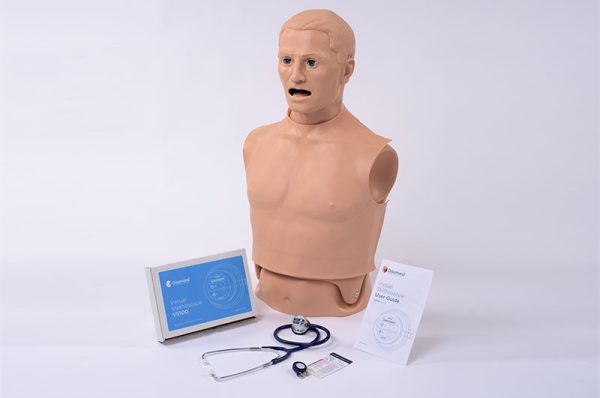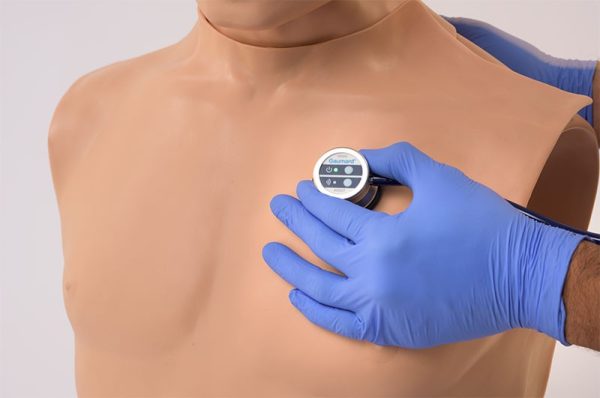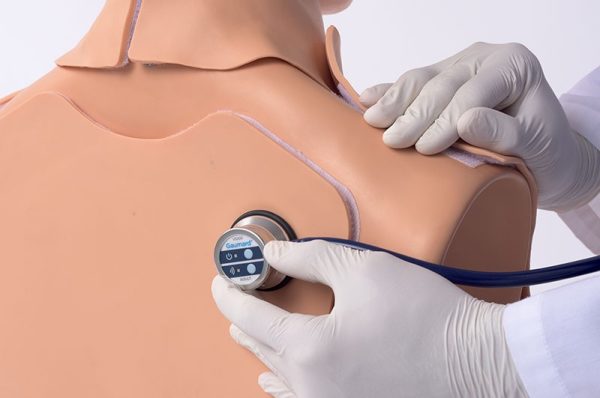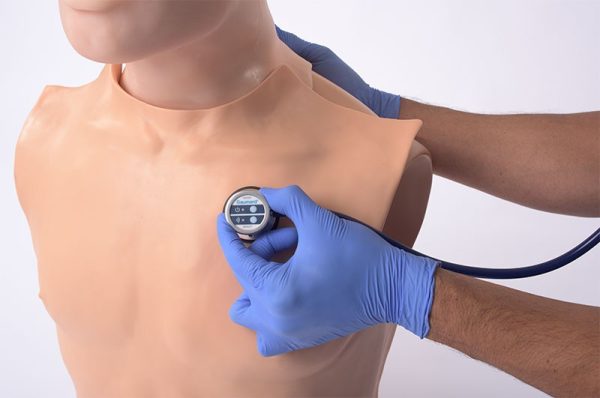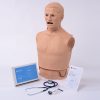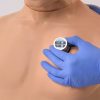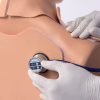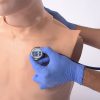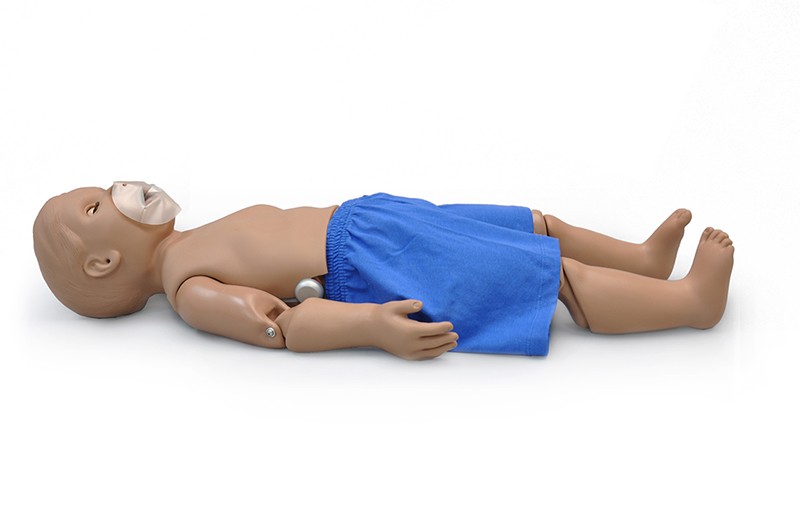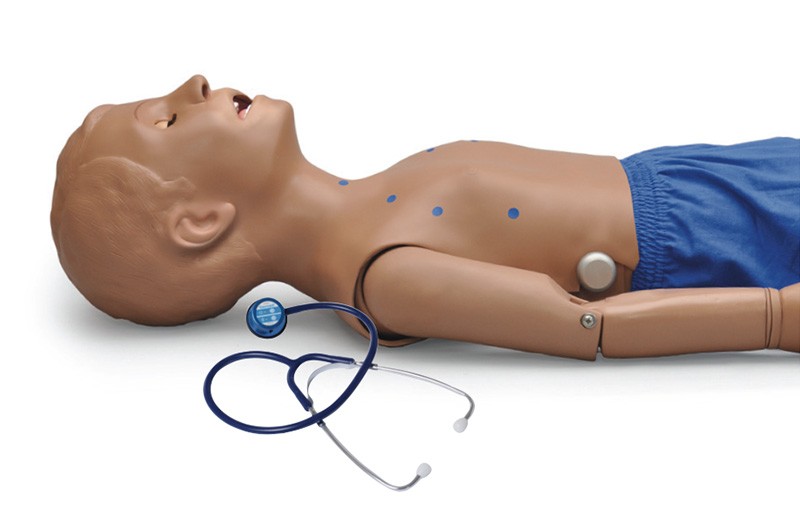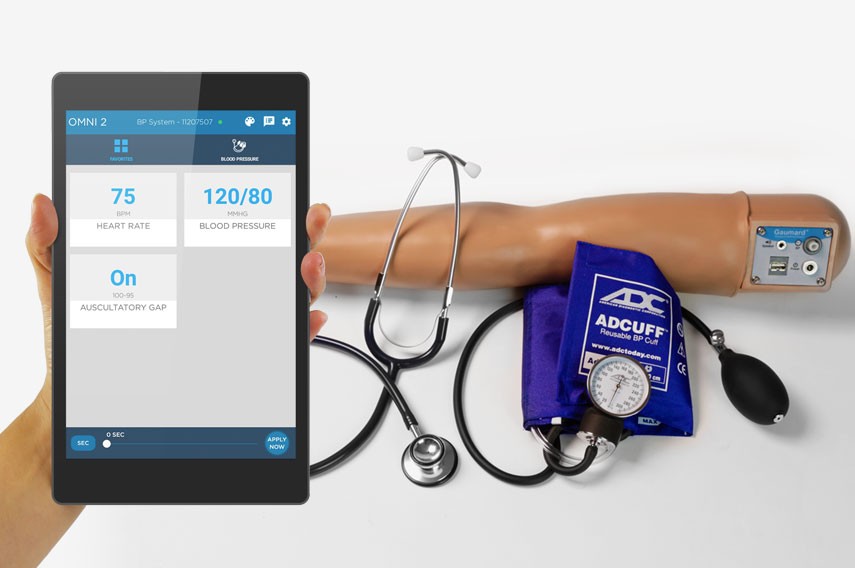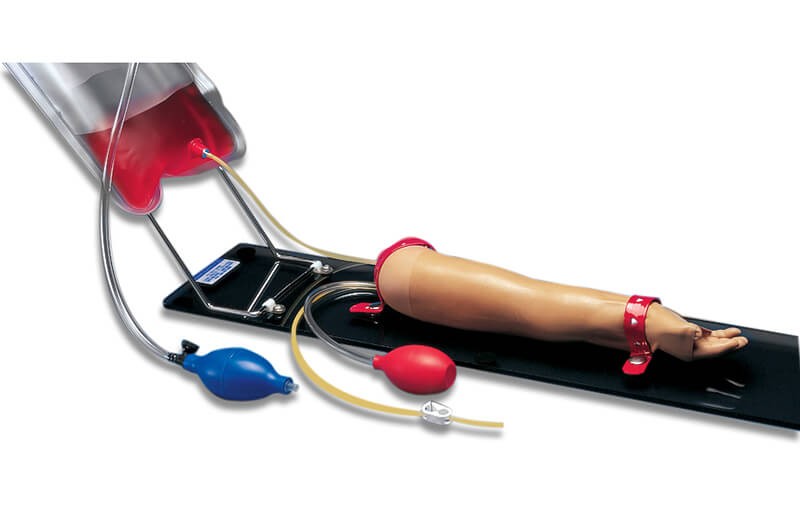Description
S315.200 Features
- Hear the appropriate heart or lung sound as bell of stethoscope is moved across the front and back of the torso
- Full size adult torso with palpable anatomic landmarks
- Sensor network hidden beneath the skin
- Includes our Virtual Stethoscope® with multiple heart and lung sounds
- Instruction manual
- An external speaker plugs into the Virtual Stethoscope so a classroom can hear what the student hears
- Carrying bag
VS100 SOUND DETAILS
| SOUND | COMMENT |
| Venous Hum | This continuous murmur may be found in children aged 3 to 6 years. It occurs as a result of the turbulence in the jugular venous system and it only heard when the child is in the upright position. The rate is about 96 beats per minute. |
| Aortic Stenosis | This systolic murmur is loudest over the ascending aorta. Duration and intensity vary with the severity of stenosis. An ejection click may be heard. |
| Split S2 | Sounds are rather normal. Degree of splitting increases with the inspiration and decreases with the expiration. Wide split suggests prolonged RV ejection or shortened LV ejection; narrow split suggests early closure of pulmonary valve. |
| Pulmonary Stenosis | This systolic murmur is normally loudest over the main pulmonary artery. Duration and intensity vary with the severity of stenosis. |
| Systolic Fixed S2 | Fixed S2 does not change width during respiration. The absence of split S2 usually indicates a condition that prolongs RV ejection time or shortens LV ejection. Conditions include volume/pressure overload and RBBB. |
| 1 Year Heart | Normal heart sounds heard in a 1 y/o child. The rate is 120 bpm. |
| 6 Year Heart | Normal heart sounds heard in a 6 y/o infant. The rate is 84 bpm. |
| Stills Murmur | The vibratory murmur may be found in children between ages 3 to 6 years and sounds like “twanging string”, or squeaking/ buzzing at a low frequency. During inspiration, murmurs increase on the right side and decrease in the left. |
| Stills Murmur | The vibratory murmur may be found in children between ages 3 to 6 years and sounds like “twanging string”, or squeaking/ buzzing at a low frequency. During inspiration, murmurs increase on the right side and decrease in the left. |
| Mitral Valve Regurgitation | This systolic murmur is produced by lesions, more often rheumatic than congenital in origin. Chest ï¬lms may show pulmonary vein congestion, pulmonary edema, or an enlargement of the left atrium/ventricle. |
| Split S1 | S1 relates to closure of mitral and tricuspid valves. Not common in normal children, and may indicate RBBB or other anomalies. Sound can be confused with an ejection click S4. |
| Normal Infant | Expiration sounds are louder, have a higher pitch, and are of longer duration than during inspiration. The silent period or pause following expiration is longer than the one between expiration and inspiration. |
| Normal Child | Expiration sounds are louder, have a higher pitch, and are of longer duration than during inspiration. The silent period or pause following expiration is longer than the one between expiration and inspiration. |
| Stridor Sounds | Patient has marked respiratory distress, and a narrow aperture between the vocal cords that produces a high pitched tone during both inspiration and expiration. During the end of expiration, there is an abrupt drop in pitch. |
| Wheezing Sounds | These musical wheezing sounds are often heard in asthma patients. During inspiration, the wheeze is slightly higher in pitch than during expiration. Wheezing in asthmatics is often present in either one or both phases of respiration. |
| Ronchi Sounds | Coarse crackles are present during both inspiration and expiration. There are also some very low pitched repetitive sounds that are ronchi. High pitched squeaks are also audible against a background of bronchial breath sounds. |

